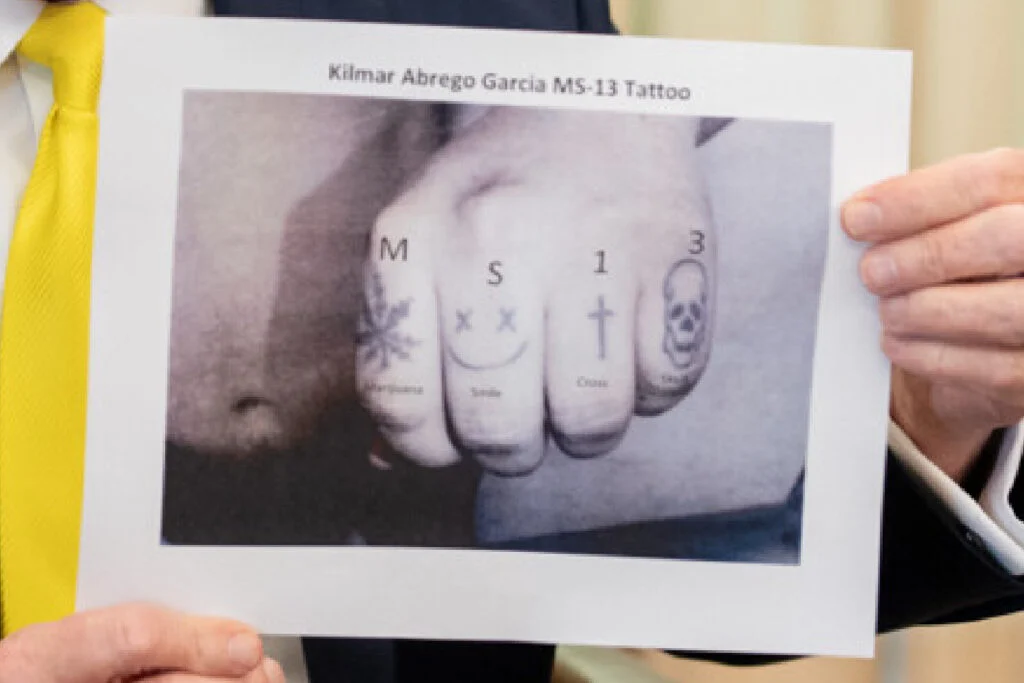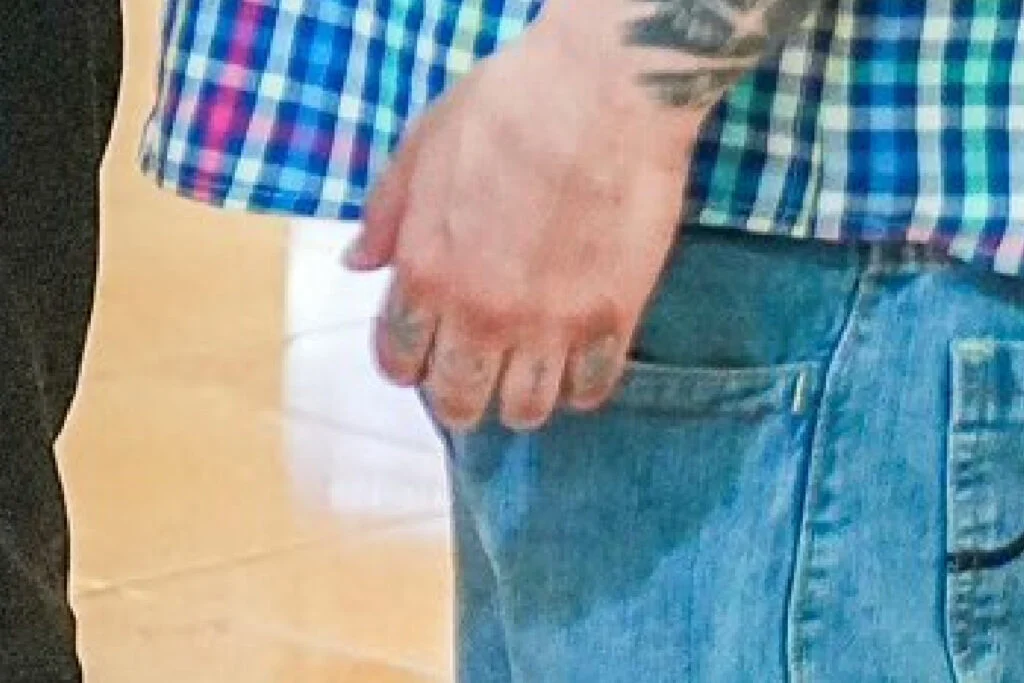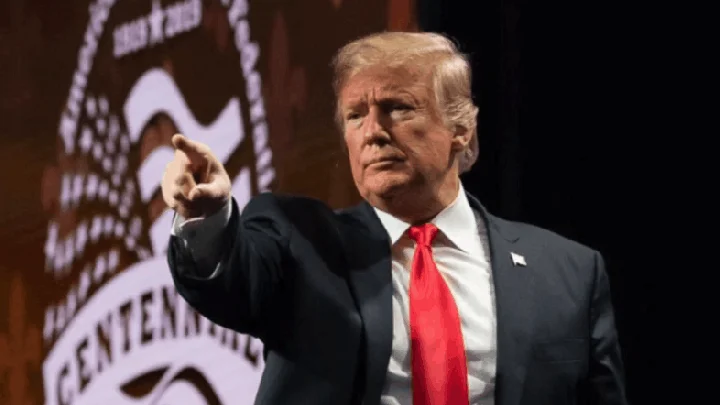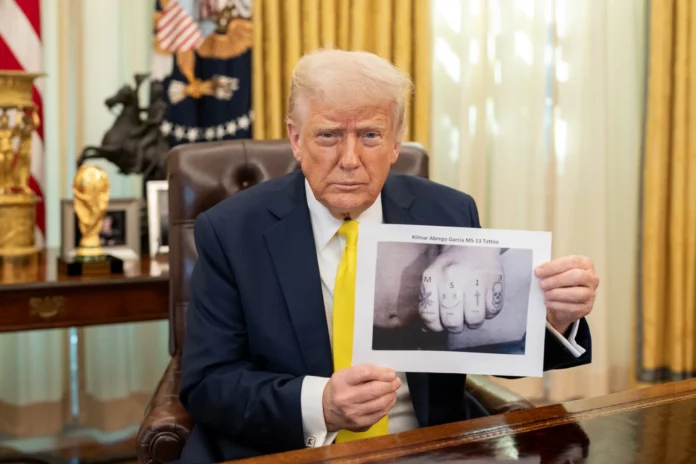ABC News aired an interview with Donald Trump on Tuesday night, centered on the first 100 days of his potential second term. As expected, the conversation included many of the authoritarian talking points that have become typical of his rhetoric. But one moment stood out for its revealing nature: Trump appeared to genuinely believe that a photoshopped image he shared on social media earlier this month was real.
First, some context: On April 18, President Trump posted an image of himself on Truth Social, holding up a piece of paper that appeared to read “Kilmar Abrego Garcia MS-13 Tattoo.” Abrego Garcia is the individual who was mistakenly deported to a prison in El Salvador. Despite the error, Trump has maintained that Abrego Garcia belongs there due to alleged ties to the MS-13 gang. However, the U.S. Supreme Court has ordered that Abrego Garcia be returned to the United States—a directive Trump has so far ignored, refusing to request his return from the Salvadoran government.
A closer look at the image reveals that the letters “M,” “S,” “1,” and “3” have been digitally inserted onto the paper Trump is holding. The tattoos visible on the knuckles in the photo are genuine and depict a marijuana leaf, a smiley face, a cross, and a skull. However, additional text seen beneath each image has also been digitally altered into the photo.

So how do we know the image was digitally altered? Beyond the fact that the manipulation is fairly obvious to anyone familiar with social media or digital imagery, there’s concrete visual evidence: recent photographs of Abrego Garcia clearly show that the “MS-13” lettering does not appear on his hand.
One such photo was posted on April 17 by El Salvador’s President, Nayib Bukele, on X (formerly Twitter). The image was taken during a meeting between Abrego Garcia and U.S. Senator Chris Van Hollen of Maryland, who had traveled to El Salvador to see him. Although Van Hollen was initially denied access, he was eventually permitted a brief visit.

While the photo from Senator Van Hollen’s meeting with Abrego Garcia becomes pixelated when enlarged, it remains clear enough to show that there are no “MS-13” markings on his hand. Additional images published by the New York Post further confirm that the gang-related text simply isn’t present. Despite this, Trump stated during Tuesday’s interview that he genuinely believes the photo he shared on Truth Social was real.
During the ABC News interview that aired Tuesday, Trump brought up the alleged MS-13 tattoo without being prompted, claiming, “And you’ll pick out one man, but even the man that you picked out, he said he wasn’t a member of a gang, and then they looked, and on his knuckles, he had MS-13.”
However, journalist Terry Moran, who conducted the interview, pushed back on Trump’s claim, noting, “There’s a dispute on that.”
Trump: Wait a minute. Wait a minute. He had MS-13 tattooed on his knuckles.
Moran: Well, he had some tattoos that have been interpreted that way, but let’s move on.
Trump: Wait a minute. Terry, Terry…
Moran: He didn’t have MS-13 written on his knuckles.
Trump: It says MS-13.
Moran: That was Photoshopped.
Trump: That was Photoshopped?
Trump went on to claim that he was giving Moran “the break of a lifetime” by agreeing to the interview, then complained that the journalist “wasn’t being very nice.”
Trump: He had MS-13 tattooed…
Moran: We’ll agree to disagree. I’d like to move on to something else.
Trump: Terry, Terry, do you want me to show you the picture?
Moran: I’ve seen the picture. We’ll agree to disagree.
Trump: And you think it was Photoshopped?
Trump: Don’t Photoshop it—just look at his hand. He had MS-13.
Moran: He did have tattoos that some interpret that way. I’m not an expert on gang tattoos. I want to shift to Ukraine.
It’s unclear whether Trump fully understands what Photoshop is, and Moran didn’t directly ask him about it, even after the president awkwardly said, “Don’t Photoshop it.” Despite Moran’s attempts to steer the conversation elsewhere, Trump continued to insist that the images were real.
Trump: No, no, Terry. He had MS as clear as you can be, not just interpreted. This is why people don’t believe the news anymore—it’s fake news.
Moran: When he was photographed in El Salvador, the tattoos aren’t there. But let’s just move on. They aren’t there when he’s in El Salvador.
Trump: They weren’t there, but they’re there now, right?
Moran: No, but they’re in your picture.
Trump: Terry.
Moran: Ukraine, sir.
Trump: He’s got MS-13 on his knuckles.
Moran: Alright, okay. We’ll take a look.
Trump: You do such a disservice.
Moran: We’ll take a look at that, sir.
Trump: Why don’t you just say yes, he does, and we’ll move on to something else?
Moran: It’s contested.
It’s truly a bizarre exchange worth watching for yourself. What’s especially odd is how Moran repeatedly tried to move the conversation along, while Trump insisted on defending his belief in the fake image. Moran could have asked who provided him with that printout. Was it his senior advisor Stephen Miller, the notorious architect of some of Trump’s harshest and most racist policies? We may never know, as Moran missed the chance to ask that crucial question.
It can be hard to distinguish when Trump is lying versus when he’s just being downright clueless. But Tuesday’s interview made it clear that he genuinely believes this particular claim. It seems unlikely he would dwell on it if he knew he was lying, but who really knows for sure?
Regardless of Trump’s mindset, the image is fake—and as the most powerful person in the country, he should absolutely know that. With tens of thousands of people dedicated to gathering intelligence to keep him well-informed, you’d expect him to be one of the most knowledgeable individuals on the planet. Yet, time and again, he proves himself to be one of the least informed.
Trump’s world is no stranger to manipulating images to fit his narrative. In 2019, he famously altered a hurricane map with a black Sharpie to match a previous claim he made about the storm’s path. Additionally, in late 2018 and early 2019, Trump’s social media accounts shared at least three photos of him that had been photoshopped to make him appear thinner and with longer fingers. While it’s unclear whether Trump personally ordered these alterations, it reflects the kind of distorted reality that MAGA culture fosters, driven by insecurity and image manipulation.

Fascist lies don’t always come in the form of digital manipulation. El Salvador’s President Bukele attempted his own in-person deception when he brought out “margaritas” during Senator Van Hollen’s meeting with Abrego Garcia. Bukele was clearly trying to create the illusion that Abrego Garcia was living a life of luxury in an island paradise, despite the reality that he had been held in CECOT, a brutal prison known for torture and forced labor.
Meanwhile, Trump has defied a Supreme Court order, refusing to bring Abrego Garcia back to the U.S., putting the country in the midst of a constitutional crisis that many still overlook. Trump told Moran that he could bring Abrego Garcia back if he chose to, but he made it clear he won’t. As frustrating as this is, at least Tuesday’s interview revealed something important: Trump isn’t always knowingly lying—sometimes, he’s just an incredibly gullible fool.



 Viesearch - The Human-curated Search Engine
Blogarama - Blog Directory
Web Directory gma
Directory Master
http://tech.ellysdirectory.com
8e3055d3-6131-49a1-9717-82ccecc4bb7a
Viesearch - The Human-curated Search Engine
Blogarama - Blog Directory
Web Directory gma
Directory Master
http://tech.ellysdirectory.com
8e3055d3-6131-49a1-9717-82ccecc4bb7a